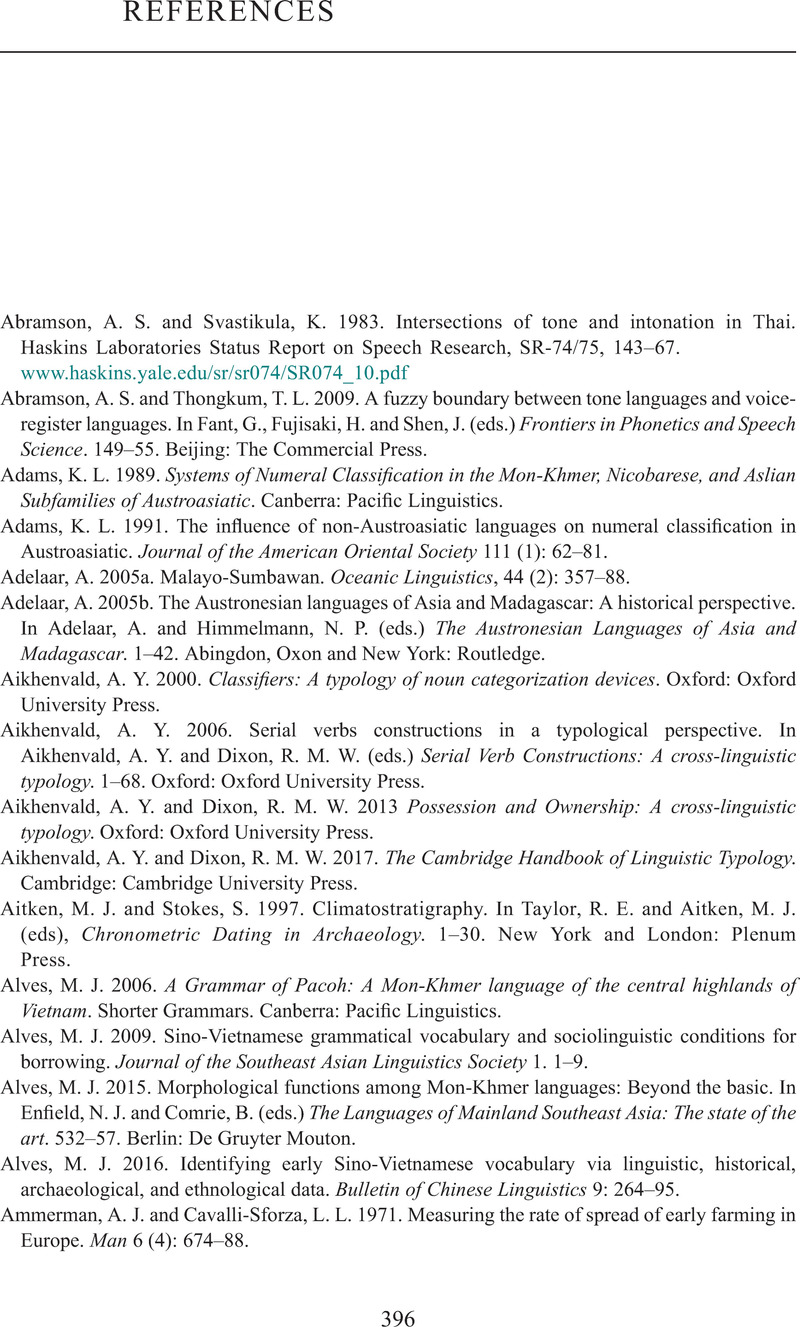Book contents
- The Languages of Mainland Southeast Asia
- Cambridge Language Surveys
- THE LANGUAGES OF MAINLAND SOUTHEAST ASIA
- Copyright page
- Contents
- Figures
- Maps
- Tables
- Preface
- Acknowledgements
- Note on the nature and organization of the book
- Abbreviations
- 1 Context
- 2 Language Histories and Classifications
- 3 Typological Overview
- 4 Phonological Systems
- 5 Word Formation
- 6 Reference and Nominal Syntax
- 7 Predication and Clausal Syntax
- Postface
- References
- Author Index
- Language Index
- Subject Index
- References
References
Published online by Cambridge University Press: 22 March 2021
- The Languages of Mainland Southeast Asia
- Cambridge Language Surveys
- THE LANGUAGES OF MAINLAND SOUTHEAST ASIA
- Copyright page
- Contents
- Figures
- Maps
- Tables
- Preface
- Acknowledgements
- Note on the nature and organization of the book
- Abbreviations
- 1 Context
- 2 Language Histories and Classifications
- 3 Typological Overview
- 4 Phonological Systems
- 5 Word Formation
- 6 Reference and Nominal Syntax
- 7 Predication and Clausal Syntax
- Postface
- References
- Author Index
- Language Index
- Subject Index
- References
Summary

- Type
- Chapter
- Information
- The Languages of Mainland Southeast Asia , pp. 396 - 428Publisher: Cambridge University PressPrint publication year: 2021

